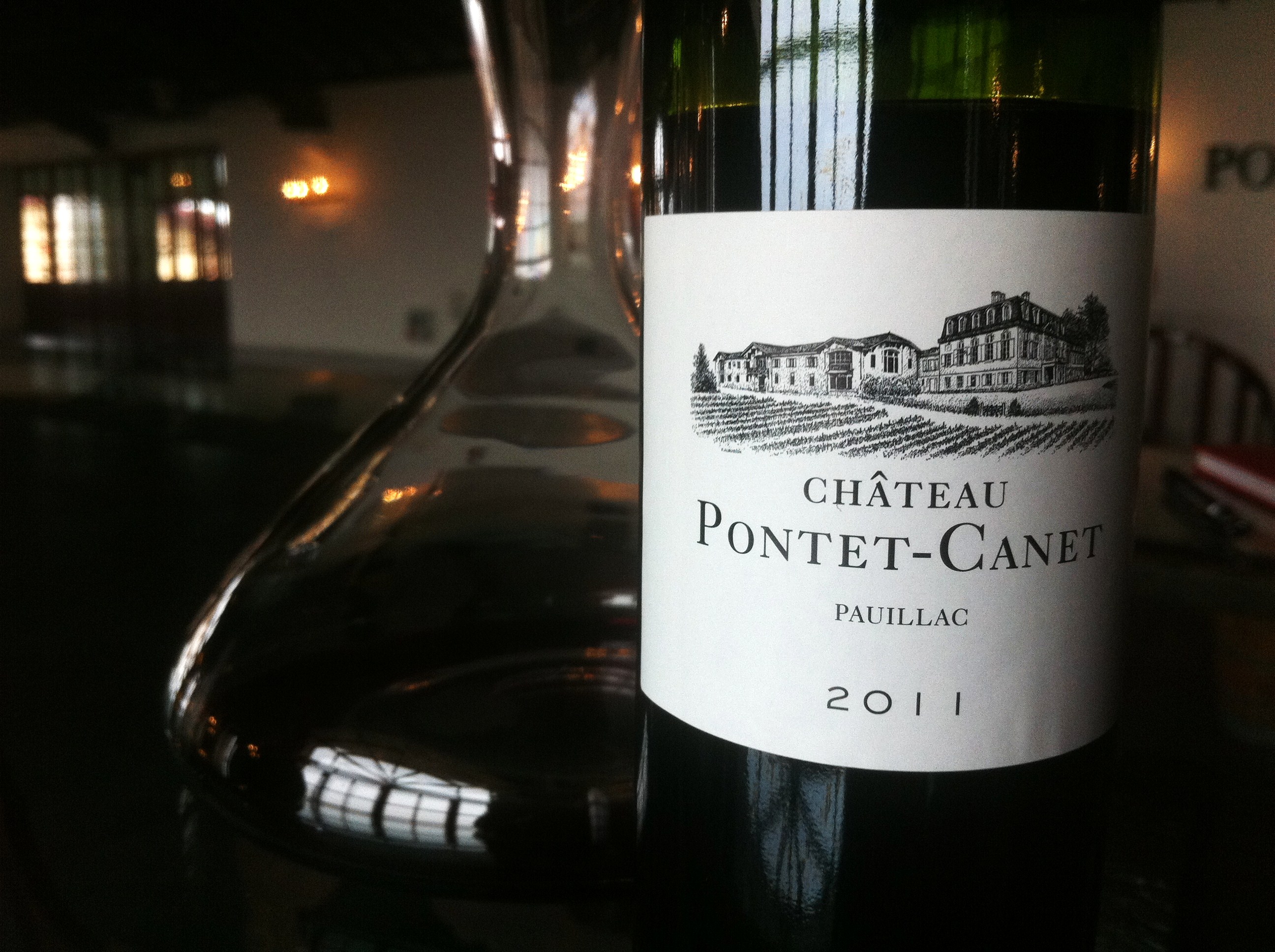Bordeaux Primeurs 2013: Château Margaux
 Château Margaux has succeeded in producing an elegant and perfumed wine in 2013. It is particularly interesting that this has been achieved without any Merlot at all. The final blend, 94% Cabernet Sauvignon, 5% Cabernet Franc and 1% Petit Verdot isn’t particularly ‘strict’, such would appear to be the genuine quality of the estate’s Cabernet [despite being picked nearly a week early]. The real casualty here is Pavillon Rouge. Only a small quantity has been produced in 2013 and much declassified into the third and fourth wines. Pavillon Blanc, the estate’s 100% Sauvignon Blanc, is zesty and attractive and underscores once again just how well the whites have done in this otherwise very tricky vintage.
Château Margaux has succeeded in producing an elegant and perfumed wine in 2013. It is particularly interesting that this has been achieved without any Merlot at all. The final blend, 94% Cabernet Sauvignon, 5% Cabernet Franc and 1% Petit Verdot isn’t particularly ‘strict’, such would appear to be the genuine quality of the estate’s Cabernet [despite being picked nearly a week early]. The real casualty here is Pavillon Rouge. Only a small quantity has been produced in 2013 and much declassified into the third and fourth wines. Pavillon Blanc, the estate’s 100% Sauvignon Blanc, is zesty and attractive and underscores once again just how well the whites have done in this otherwise very tricky vintage.
Merlot is in fact not a huge component in Château Margaux as it is elsewhere in the appellation. It is far higher at Château Palmer and Château Lascombes for example. Here it usually represents 5-10% of the final blend in the grand vin. It is higher proportionately in Pavillon Rouge [20-25%] but it is half that [10%] this year. Paul Pontallier described the variety as ‘rather disappointing’ in 2013. Much went straight into the fourth wine, not even the third.
The problem was partly the cool weather during flowering with a mixture of coulure and millerandage affecting the grape, but partly that the variety was disproportionally hit by rot at harvest. Even the lesser Cabernets did better than the Merlot. For Pontallier it reinforced the fact that the estate’s different terroirs are more important to consider than the varieties themselves. It’s the plots that matter. Those they consider as great did the job in 2013, but the differences between these and the lesser plots widened to a greater extent than the would do in a good year.

Overall Pontallier [pictured here] draws three conclusions on the vintage. Firstly, following on from above, having great terroir [early ripening terroir especially] makes a huge difference in a year like 2013. Secondly having the wherewithal of a premier grand cru means you have the human and financial means to make the quick decisions necessary, to take the extra care and to do a huge amount of legwork in the vineyard. Finally, they have the techniques today [optical sorting and the like] that simply weren’t available twenty or thirty years ago. It means that however bad the vintage there unlikely to be disasters on the scale of ’63, ’65, ’68 or ’77. That said, without the hot and sunny July, 2013 would have ended up a very sorry vintage indeed.
Overall the threat of rot meant that the grapes were picked probably five or six days earlier than they had anticipated. The grand vin represents the same share of production as usual – 38% of the crop. The wine is bright and fresh with real Margaux delicacy. It doesn’t have the scale of the big years, or the perfection of 2009 obviously, but it is a striking effort in the circumstances. Probably it lies somewhere between 2007 and 2008 in quality. As I mentioned at the top, Pavillon Rouge suffered the most in 2013. It is the smallest proportion of the harvest ever [21%] and only 4000 cases will be made. The rest [41%] went into the 3rd and 4th wines.
On a brighter note, the Pavillion Blanc looks vivacious and zesty. Conditions were much better for the harvest of the Sauvignon Blanc and ripening earlier than the reds, it was picked before the pressure of botrytis grew. Still yields were low [25hl/ha] and selection was strict with only 40% of the crop made it into the final blend.
In terms of pricing, Chateau Margaux was the third of the first growths to release and it did so at 215 euros a bottle ex negociant,10% down on 2012. The pricing made it the cheapest on the market according to Liv-Ex working out at around £2500 [$4200 or so] for a case of twelve. On that basis at least it passes the en primeur test.
The following wines were tasted on Thursday April 3, 2013 at Château Margaux.
Château Margaux, Premier Grand Cru Classé, Margaux
Deep at core; colour close to the edge; pretty purple; attractive purity of blackcurrant fruit; quite scented and aromatic with genuine violet perfume; very Margaux; real delicacy; elegant and balanced on the palate, light; with soft tannin, a little density and good-ish length. Has purity and delicacy. [94% Cabernet Sauvignon, 5% Cabernet Franc, 1% Petit Verdot]. Drink 2018-2030. 91-93
Pavillon Rouge du Château Margaux
Mid depth; light earthy purple at edge; some cherry and a little plum and bubble gum tones; light and quite tight on the palate but well made and polished as you’d expect. Little austere on the finish. [84% Cabernet Sauvignon, 10% Merlot, 4% Petit Verdot, 2% Cabernet Franc]. Drink 2017-2026. 86-88
Pavillon Blanc du Château Margaux
Steely green/silver; grapefruit and passionfruit tones; zesty and attractive; good energy and drive on the palate. Balanced. [100% Sauvignon Blanc]. Drink 2016-2020. 91-93+
Tags: Bordeaux, Bordeaux 2013, Cabernet Franc, Cabernet Sauvignon, Chateau Margaux, Margaux, Merlot, Paul Pontallier, Pavillon Blanc du Chateau Margaux, Pavillon Rouge du Chateau Margaux, Petit Verdot, Premier Grand Cru Classé, Sauvignon Blanc


